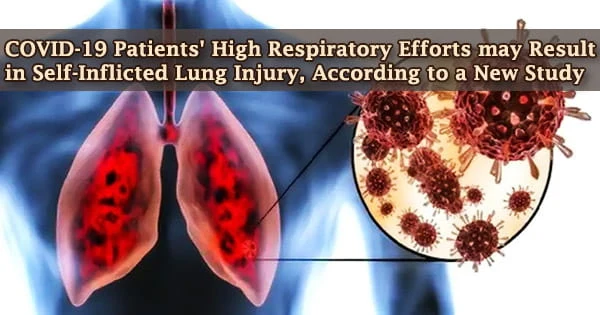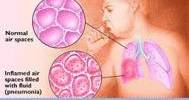Researchers from the University of Warwick looked into the effects of excessive breathing efforts on the lungs of individuals suffering from COVID-19-related acute respiratory failure and assessed the risk of lung injury.
Intensive care specialists increasingly recognize the potential for mechanical ventilators to further damage already damaged lungs by exerting high pressures and forces and therefore use specific protocols to reduce the risk of so-called ventilator-induced lung injury.
Since the start of the current epidemic, several clinicians have claimed that heightened respiratory attempts in spontaneously breathing COVID-19 patients could cause similar damage.
In the critical care community, so-called patient self-inflicted lung injury is a contentious notion, with some clinicians claiming there is no evidence for it, while others say that patients should be placed on mechanical ventilators if necessary to avoid it.
During prenatal life, lung damage with long-term effects on pulmonary function and cognitive development is possible. Mechanical injury and the accompanying inflammation, which can contribute to nonuniform lung mechanics in mechanically ventilated patients, can start as early as delivery during the initial resuscitation.
Increased respiratory attempts have been linked to patient self-inflicted lung injury in spontaneously breathing patients with COVID-19 acute hypoxaemic respiratory failure, although direct clinical data relating increased inspiratory effort to lung injury is lacking.
Our modeling has found that patients who experience COVID-19 acute hypoxaemic respiratory failure may be at significant risk of patient self-inflicted lung injury due to increased respiratory efforts. These efforts need to be carefully monitored and controlled during their care. Patients should always follow the advice of their clinicians regarding the timing of initiation of oxygen support, non-invasive ventilation, or mechanical ventilation.
Declan Bates
Researchers from the University of Warwick used a computational simulator of cardiopulmonary pathophysiology to quantify the mechanical forces that could lead to patient self-inflicted lung injury at different levels of respiratory effort in the paper ‘High risk of patient self-inflicted lung injury in COVID-19 with frequently encountered spontaneous breathing patterns: a computational modeling study,’ which was published in the journal Annals of Intensive Care.
The simulator was set up to replicate a group of ten COVID-19 patients who were receiving supplemental oxygen treatment.
For each of these individuals, simulations were run at a variety of tidal volumes (depth of breathing) and respiratory rates, ranging from 7 ml/kg and 14 breaths per minute (representing normal breathing) to 10 ml/kg and 30 breaths per minute (representing high respiratory effort).
The models revealed that potentially harmful pressures and strains could be generated at levels of respiratory exertion commonly seen in COVID-19 patients, according to the findings.
Professor Declan Bates, from the School of Engineering at the University of Warwick comments:
“Our modeling has found that patients who experience COVID-19 acute hypoxaemic respiratory failure may be at significant risk of patient self-inflicted lung injury due to increased respiratory efforts. These efforts need to be carefully monitored and controlled during their care.”
“Patients should always follow the advice of their clinicians regarding timing of initiation of oxygen support, non-invasive ventilation, or mechanical ventilation.”
















